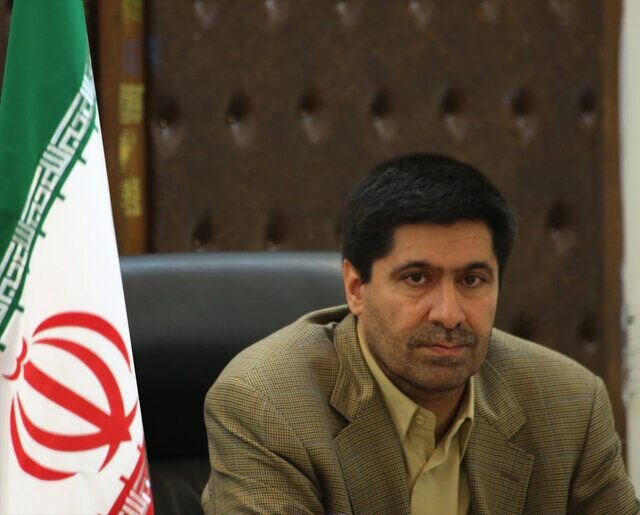Benefactors helping rehabilitated addicts find jobs

TEHRAN – Benefactors are helping rehabilitated addicts by providing job opportunities for them, Farzin Rahim-Nazari, an official with anti-narcotics headquarters has said.
“Some 2,200 benefactors have been cooperating with the Association of Life Helper Benefactors in 22 provinces. With the help of the benefactors, more than 3,000 jobs have been created so far,” ISNA quoted Rahim-Nazari as saying.
He went on to say that the Association of Life Helper Benefactors was established last year based on a plan by the secretary general of the anti-narcotics headquarters.
Creating jobs for rehabilitated addicts during their treatment is one of the main activities of the benefactors. They construct silos, equip workshops and treatment centers and employ the rehabilitated people or their family members, Rahim-Nazari added.
Over the past one and a half years, more than 3,000 billion rials (about $6m) have been donated by benefactors in cash and about 2,000 billion (some $4m) have been donated in non-cash aids.
“We are far ahead of the plan, and it has been welcomed by benefactors. The treatment cycle will be completed when a job is created, and this is what we do,” he said.
Fight against drugs
In June, Eskandar Momeni, the secretary general of the Iranian anti-narcotics headquarters, said, “The flow of narcotics into Iran has decreased by about 15 percent over the past four years.”
The impact of dismantling the financial foundations of drug traffickers has increased by about 10 times over the past three to four years, he said, adding “This has led to a decrease of 15 percent in the entry of drugs into Iran.”
“The rising trend of drug production in Afghanistan started about 20 years ago, after the occupation of Afghanistan by NATO and the United States.
Therefore, the smuggling of narcotics has increased almost 50 times, that is, from about 200 tons in 2000 to more than 9,000 tons,” Momeni said, ISNA reported.
In May, Momeni said some 1,700 regional and international drug gangs were dismantled by Iran in the year 2022.
Iran is located next to Afghanistan, the largest producer of opioids, the second largest producer of cannabis, and recently the producer of glass (methamphetamine), he added.
Momeni made the remarks in a meeting with Iraqi Interior Minister Abdul Amir Kamel Al-Shammari on the sidelines of the first Baghdad International Drug Control Conference which was held from May 9-10.
Setting up about 800 coastal checkpoints in the Persian Gulf, strengthening and developing electronic and electro-optical equipment, and installing land-based radars and specialized cameras are among Iran's measures to deal with maritime smuggling, Momeni explained.
Momeni signed a memorandum of understanding with Ghada Fathi Waly, the director general of the United Nations Office on Drugs and Crime (UNODC) on the sidelines of the 66th session of the United Nations Commission on Narcotic Drugs (CND) that was held in Vienna from March 13-17.
The agreement opens a new chapter in Iran's cooperation with the United Nations in the four areas of dealing with the supply and demand of narcotics, and offering treatment and rehabilitation services, Momeni said, IRIB reported.
“We firmly believe that international conventions are designed to respond to the challenges and issues facing communities,” he said, adding that any interpretation aimed at legalizing or decriminalizing the illegal drug trade is a serious threat to the security of countries.
Therefore, the Islamic Republic of Iran strongly supports the position and effective role of the Commission on Narcotic Drugs as the main policy-making body of the United Nations in matters related to drugs and the role of the International Narcotics Control Board (INCB) in facilitating legal access to scientific and medical needs, Momeni highlighted.
“Despite the repeated emphasis of the United Nations on the principle of shared responsibility in dealing with global problems, including drugs, we still, unfortunately, witness the selective and political approach of some countries, especially in the financing of projects, programs, and the provision of technical equipment.”
Since 2017, the Islamic Republic of Iran has succeeded in discovering 5,372 tons of narcotics, he added. “Valuable measures to reduce the rate of infectious diseases such as HIV (AIDS) and hepatitis among addicts have been taken.
Setting up healthcare, rehabilitation, and consultation centers, and empowering women and girls in cooperation with the UNODC and UNICEF offices in the cities of Tehran, Kerman, and Kermanshah were among the measures.”
In February, Momeni said Iran spends about $700 million to $1 billion annually to fight against narcotics.
According to the reports of international institutions and organizations, about 92 percent of drug discoveries are made by Iran, he said, adding that the country is completely alone and the cost is borne by the government and the people.
Momeni emphasized that the international community should increase support to the Islamic Republic to fight against narcotics, especially to curb trafficking, IRNA reported.
“A significant part of the financial burden in the field of combating narcotics includes blocking the borders, dealing with smuggling, identifying and monitoring the transit routes, and offering treatment and rehabilitation services.”
“However, Iran has not received any notable help from international organizations until today.”
MT/MG
